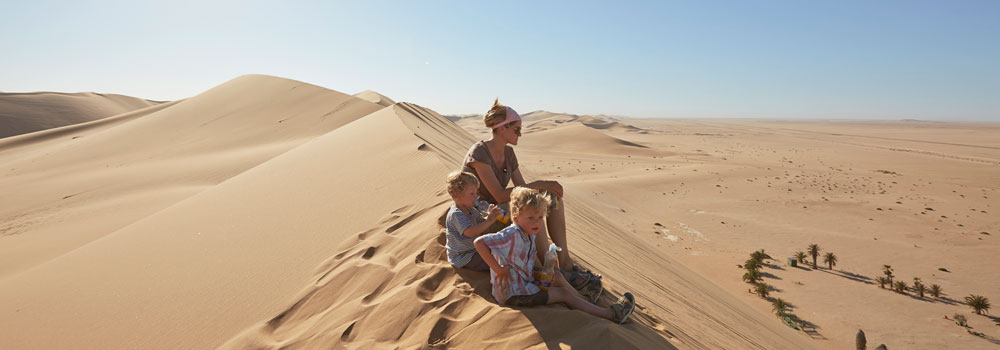Namibia’s less famous than neighbouring South Africa or Botswana and not as iconic as legends like Kenya and Tanzania.Yet it’s now one of the most tourist-friendly and accessible African safari destinations.

As well as having over a quarter of the world’s cheetah population, only in Namibia can you see free-roaming Black Rhino and few places anywhere are more spectacular than the Namib Desert’s dune landscape or unearthly Skeleton Coast.
Self-drive safaris are an option in Namibia: the roads are generally well-surfaced and safe and most major parks allow private vehicles. But the country’s vast and sparsely populated so long journeys are inevitable and independent family holidays with under 10s aren’t recommended.
Direct flights from the UK to Johannesburg take just over 10 hours and direct daily flights from Johannesburg to Namibia take less than two hours.
Namibia’s 11 national parks include world famous Etosha, considered to be one of the greatest of all African game reserves.
The Skeleton Coast in north west Namibia’s known by the indigenous San people as, ‘the land God made in anger’. The area’s now a national park and included in some family safari itineraries.
Several UK operators specialise in multi-centre family safari holidays in Namibia including Expert Africa, Audley Travel and Go2Africa.
Namibia’s game reserves and national parks have an extraordinary variety of innovative, eco-conscious and beautiful accommodation ranging from wood and canvas ‘hotels’ to luxury camps, historic fortresses and wilderness lodges.
Namibia’s larger than France with a population of only 2 million, borders Botswana, South Africa and Angola and has an 1572km Atlantic coastline.
With barely any rainfall and a predominantly desert environment, Namibia’s good to visit at any time of year. The weather’s warmest and clearest from April to August; September and October are best months for wildlife viewing.
Namibia’s roads are mostly very good, surfaced and well-signposted. Major national parks and reserves permit self-drive safaris and 2WDs are normally up to most routes. Sossusviei needs a 4×4 and makes quite demanding driving. If you aren’t confident, there are shuttle services and private tours. Several of Namibia’s parks are only accessible with registered operators but they tend to have challenging environments and aren’t suitable for kids.
Flying’s an option and worth considering for multi-centre holidays covering several parks or visits to more remote areas like Damaraland and the Skeleton Coast.
A few things to remember if you self-drive: book accommodation in advance and let someone know when you expect to arrive; leave plenty of time to get to your camp before dark in large parks like Etosha and Namib-Naukluft; don’t drive at night, dawn or dusk as wildlife’s most active then; slow down and avoid sudden braking on gravel surfaces; watch your fuel and know where the next petrol station is; carry plenty of water and snacks; keep your phone charged; carry local emergency numbers and have a paper map as back up.